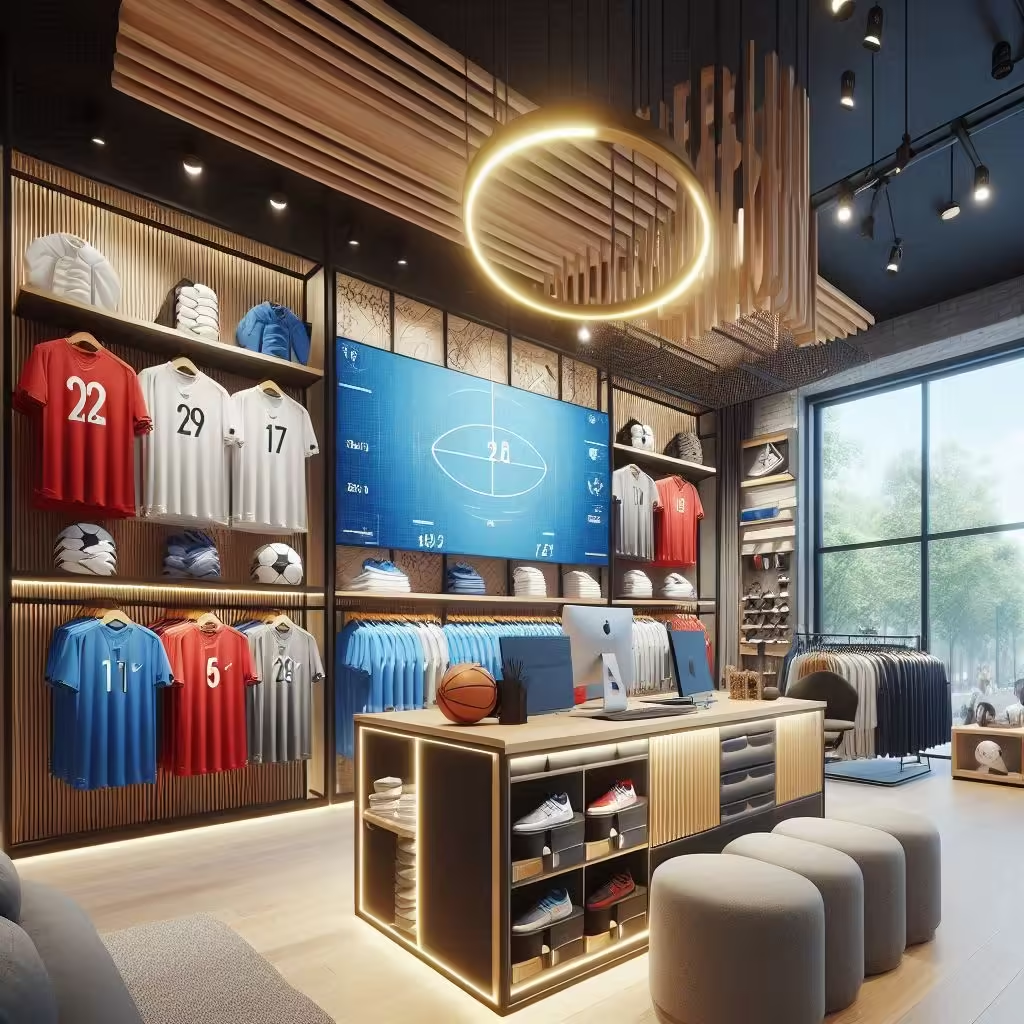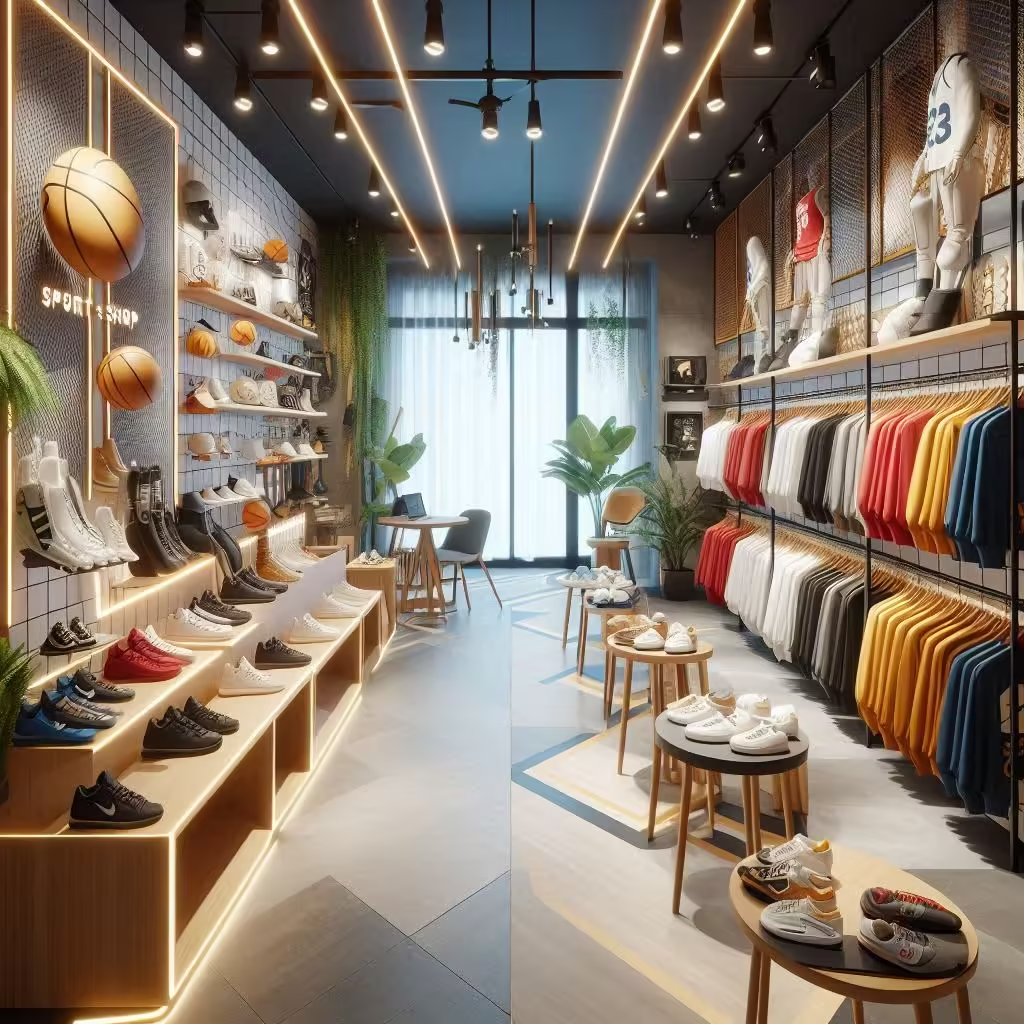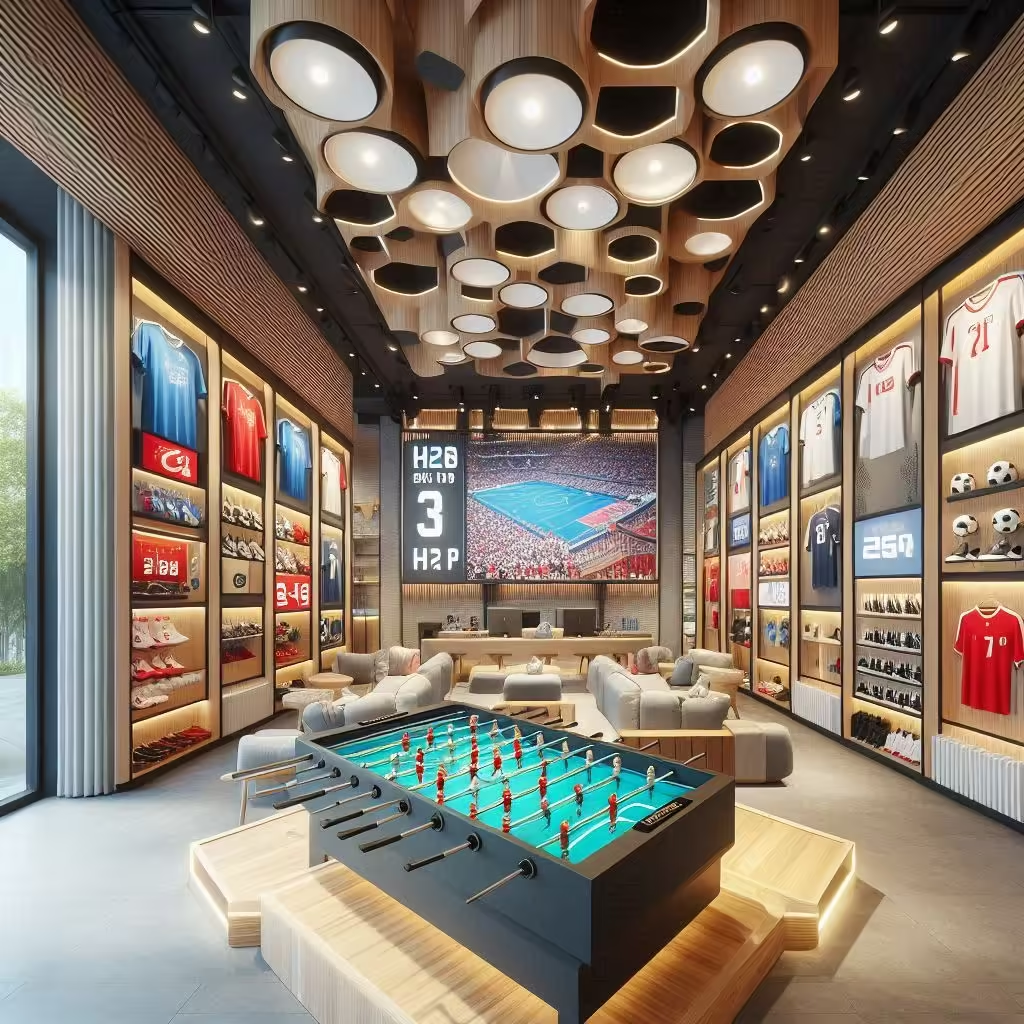In the highly competitive world of retail, sports shops need to create an inviting, dynamic atmosphere to attract customers and enhance their shopping experience. Interior design plays a crucial role in establishing a brand identity, optimizing the store layout for product displays, and encouraging customers to explore the store. This article delves into the various aspects of sports shop interior design, offering insight into the best practices, design elements, and costs associated with creating an appealing and functional space.
1. Importance of Sports Shop Interior Design
A well-designed sports shop not only showcases the products effectively but also creates an immersive shopping experience that resonates with the target audience. The right interior design can:
- Enhance brand identity: A sports shop should reflect the values and energy of the sports brands it carries, creating a sense of excitement and motivation.
- Improve customer flow: An organized layout ensures that customers can navigate easily through different sections, maximizing exposure to the store’s full range of products.
- Boost sales: Strategic product placement, clear signage, and appealing displays encourage impulse buys and increase overall sales.
- Provide a memorable experience: Customers are more likely to return to a store that offers a positive, engaging shopping experience.
2. Key Elements of Sports Shop Interior Design
a) Store Layout and Zoning
The layout of a sports shop should be carefully designed to ensure a smooth customer journey from entry to checkout. This involves zoning the store into distinct areas for different product categories, such as footwear, apparel, equipment, and accessories. By doing so, customers can easily find the items they are looking for, while also discovering new products along the way.
- Open Layout: For sports shops, an open and airy layout works best as it provides a clear view of the store’s inventory. This allows customers to see products from multiple angles, encouraging exploration.
- Dedicated Sections: Create dedicated sections for different sports, such as running, football, gym and fitness, and outdoor activities. This segmentation makes it easier for customers to locate products related to their specific interests.
- Customer Flow: A well-planned layout ensures a seamless flow of traffic, guiding customers through the store naturally and encouraging them to explore all sections.



b) Display Fixtures and Shelving
Product displays are one of the most critical components of sports shop interior design. Well-designed display fixtures not only highlight the products but also enhance their appeal.
- Wall-Mounted Shelves: Use wall-mounted shelving units to showcase footwear or smaller items like caps and sports accessories. This maximizes vertical space and keeps the floor clear for customer movement.
- Free-Standing Racks: For clothing and apparel, free-standing racks allow for easy browsing. Ensure that the racks are placed in a way that maintains ample space between them for customer comfort.
- Product Showcases: High-end or limited-edition products, such as specialized sports equipment or branded merchandise, can be placed in display cases to highlight their exclusivity.
- Interactive Displays: Consider adding interactive displays or trial zones where customers can test products like shoes or equipment. This can enhance the in-store experience and boost customer confidence in their purchases.

c) Lighting and Ambience
Lighting is a powerful tool in interior design, especially for a sports shop. Proper lighting can accentuate the products, create a welcoming atmosphere, and direct attention to key areas.
- Task Lighting: Focused lighting should be used to highlight product displays, particularly on walls and in window displays. This draws customers’ attention to featured items.
- Ambient Lighting: General ambient lighting should create a bright and energetic feel that aligns with the active and athletic nature of sports. LED lights are often used for their energy efficiency and brightness.
- Accent Lighting: Accent lighting can be used to create focal points within the store, such as brand displays or new product launches. It helps in creating a visual hierarchy, making certain products stand out more than others.
d) Flooring and Materials
The choice of flooring and materials for a sports shop is important, not just for aesthetics but also for functionality and durability. Materials should be easy to maintain, given the high foot traffic such stores often experience.
- Durable Flooring: Sports shops should opt for durable, easy-to-clean flooring materials such as vinyl or polished concrete. These materials are resistant to wear and tear and can handle the heavy footfall typical in busy retail environments.
- Textured Floors: Adding textured flooring in certain areas can improve safety by preventing slips, especially in trial zones where customers may be trying on shoes or testing equipment.
- Eco-Friendly Materials: For a more sustainable design, consider using eco-friendly materials such as reclaimed wood or recycled metals for shelving and displays. This adds a unique aesthetic while appealing to environmentally conscious consumers.
3. Branding and Thematic Design
A sports shop should have a design that reflects the brand identity and creates an immersive experience for customers. Consistent branding throughout the interior—via color schemes, logos, and design elements—reinforces the store’s identity and helps establish customer loyalty.
- Color Scheme: Use bold, vibrant colors that are often associated with sports and fitness. Red, orange, and blue are popular choices as they evoke feelings of energy, strength, and motivation.
- Thematic Design: If the store caters to a specific type of sport or activity, the interior design should reflect that theme. For example, a shop focused on outdoor sports could feature nature-inspired elements like wood accents and stone finishes, while a fitness-focused store might opt for sleek, modern materials like glass and metal.
- Signage and Graphics: Use large, bold signage with clear fonts to direct customers to various sections. Graphics and murals depicting athletes or outdoor adventures can add visual interest and reinforce the store’s theme.

4. Incorporating Technology
Incorporating modern technology into the interior design of a sports shop can elevate the shopping experience, making it more engaging and convenient for customers.
- Digital Screens: Digital screens can be used to showcase promotional content, product videos, or live sports events. These screens can also feature dynamic pricing updates and seasonal promotions.
- Self-Service Kiosks: Installing self-service kiosks allows customers to check product availability, browse different sizes, and make purchases without waiting in line. This enhances customer convenience and reduces in-store congestion.
- Virtual Try-On: Some advanced sports shops integrate augmented reality (AR) features that allow customers to virtually try on products like shoes or gear before making a purchase. This not only adds a fun element but also increases customer engagement.
5. Cost of Sports Shop Interior Design
The cost of interior design for a sports shop depends on several factors, such as the size of the shop, the materials used, and the level of customization. Here’s a rough estimate of the cost breakdown:
- Basic Design: ₹800 – ₹1,500 per sq. ft.
- Mid-Range Design: ₹1,500 – ₹3,000 per sq. ft.
- High-End Design: ₹3,000 – ₹6,000 per sq. ft.
Additionally, the cost of furniture, lighting, and fixtures will add to the overall expense, with basic setups costing between ₹2 lakh to ₹5 lakh and high-end custom setups reaching ₹10 lakh or more.
In conclusion, designing the interior of a sports shop involves more than just aesthetics; it requires strategic planning to enhance the shopping experience and increase sales. By focusing on store layout, lighting, branding, and incorporating technology, sports shop owners can create a dynamic, customer-friendly environment that encourages exploration and boosts brand loyalty.






















